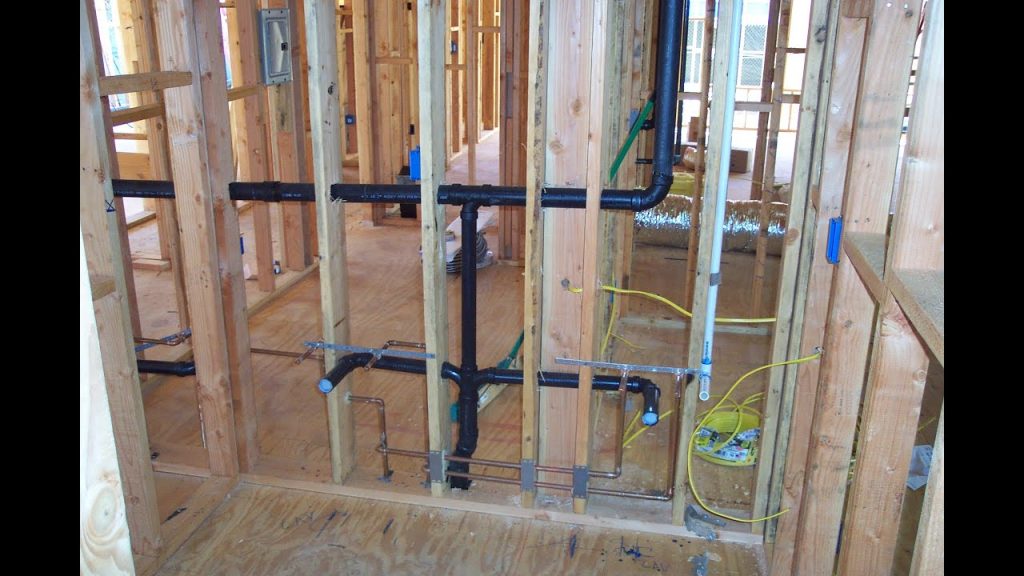In the video, we discuss the potential problems that may arise when attempting to unclog pipes using a roof vent and a plumbing snake. The video highlights the importance of measuring the vent to ensure it aligns with the walls below for maximum effectiveness. Additionally, it suggests alternative access points if there is a clean-out or if the vent configuration does not allow for easy access. The main challenge faced is the inability to see inside the walls or attic to determine the location of the pipes. The video showcases different scenarios where running a snake through a vent may or may not work depending on the plumbing configuration. It encourages viewers to measure distances, inspect the attic, and think creatively in order to find the best solution. The video concludes by mentioning a Facebook page for further information and links to additional channels and resources.
In this informative video, we aim to shed light on potential issues that can arise when attempting to unclog pipes using a roof vent. By providing insights and tips, such as measuring the vent and creative thinking, we hope to guide viewers towards effective solutions. We emphasize the challenge of not being able to see inside the walls or attic, making it necessary to rely on measurement and inspection. The video also touches upon the preferred option of accessing the vent pipe directly to bypass potential obstacles in the plumbing system. Lastly, we mention a Facebook page and other channels and resources for viewers to find more information.
Methods for Unclogging Pipes using Roof Vents
Unclogging pipes using roof vents can be a challenging task, but with the right methods and techniques, it can be done effectively. In this article, we will discuss various methods for unclogging pipes using roof vents, as well as the potential challenges and alternative approaches. Whether you’re a homeowner or a professional plumber, these methods can help you tackle stubborn clogs and keep your plumbing system running smoothly.

Measuring and Aligning the Vent with the Walls
Before attempting to unclog pipes using a roof vent, it is crucial to measure and align the vent with the walls below. This step ensures the effectiveness of the unclogging process. To determine the size of the vent, measure it from the edge of the roof. Then, estimate the vent’s location in relation to the wall below. Keep in mind that some vents may not be perfectly straight or vertical, so careful measurement and alignment are necessary.
Accessing the Drain through the Vent
If there is no clean-out available, accessing the drain through the vent becomes the primary method for unclogging pipes using roof vents. This method involves inserting a plumbing snake through the vent and into the drain to break up the clog. Various tools and techniques, such as specialized snake attachments and flexible snake extensions, can be used to navigate through the vent and reach the clog.
Dealing with Clean-Outs
If a clean-out is present, it provides an alternative access point for unclogging pipes. A clean-out is typically a knob or plug that can be unscrewed to access the plumbing system. Identifying the location of clean-outs is crucial in this process. By utilizing the clean-out, the clog can be accessed directly without the need to go through the roof vent. However, it’s essential to consider potential obstacles in the plumbing system that may hinder the effectiveness of this method.
Challenges of Unclogging Pipes using Roof Vents
One of the main challenges when using roof vents to unclog pipes is the lack of visibility inside walls and the attic. Unlike other methods that allow direct access to the clog, roof vents require navigating through unseen areas. Determining the location of the pipes and potential blockages becomes a difficult task. Moreover, there may be potential risks and safety precautions to consider when working with roof vents, such as the danger of falling from the roof or damaging the plumbing system.

Understanding the Plumbing Configuration
To effectively unclog pipes using roof vents, it’s crucial to understand the plumbing configuration. Different scenarios may require different approaches in running a snake through a vent. Analyzing the layout of pipes and identifying potential blockages can help determine the best method to tackle the clog. This understanding can also aid in identifying alternative access points that may bypass obstacles and make the unclogging process more efficient.
Measuring Distances and Inspecting the Attic
Measuring distances is an essential step in planning the unclogging process. By measuring from the edge of the wall to the roof, an estimation of the roof drain or vent location can be made. Additionally, inspecting the attic for pipe placement and obstructions can provide valuable insights into the plumbing system. This information helps in determining optimal access points and identifying potential challenges that may arise during the unclogging process.

Using Creative Thinking to Find Access Points
In some cases, accessing the clogged pipes through roof vents may not be feasible or effective. This calls for creative thinking to find alternative access points. Exploring alternatives to roof vents, such as other ventilation systems, can provide new possibilities for reaching the clog. Identifying existing openings in the plumbing system, such as clean-outs or access panels, can also offer alternative entry points for a plumbing snake.
Accessing the Vent Pipe Directly
If possible, accessing the vent pipe directly is often the preferred method for unclogging pipes using roof vents. This approach bypasses potential obstacles in the plumbing system and allows for more direct access to the clog. Gaining access to the vent pipe may require removing the drain or utilizing specialized tools. It is important to take precautions and follow proper safety procedures when accessing the vent pipe directly to avoid any damage or accidents.

Alternative Methods for Unclogging Pipes
While using roof vents to unclog pipes is a common approach, there are alternative methods available. Depending on the specific situation, these methods may offer more efficient or effective solutions. Some alternative methods include using a plumbing auger or snake directly through the drain, utilizing hydro jetting to remove clogs, or seeking professional help from a licensed plumber. Consider the nature of the clog and the accessibility of the plumbing system when choosing the best method for unclogging pipes.
Conclusion
Unclogging pipes using roof vents can be a challenging task, but by following the methods and techniques outlined in this article, it can be accomplished effectively. Measuring and aligning the vent with the walls, accessing the drain through the vent, and dealing with clean-outs are all crucial steps in this process. However, challenges such as lack of visibility and understanding the plumbing configuration require careful consideration. By using creative thinking, inspecting the attic, and identifying alternative access points, the unclogging process can be made more efficient. Accessing the vent pipe directly may be the preferred method if obstacles are present in the plumbing system. Additionally, alternative methods should be considered depending on the specific situation. By following these guidelines and recommendations, you can successfully unclog pipes using roof vents and maintain a functioning plumbing system. For further exploration and resources, consider visiting our Facebook page and other channels for additional information and support.


